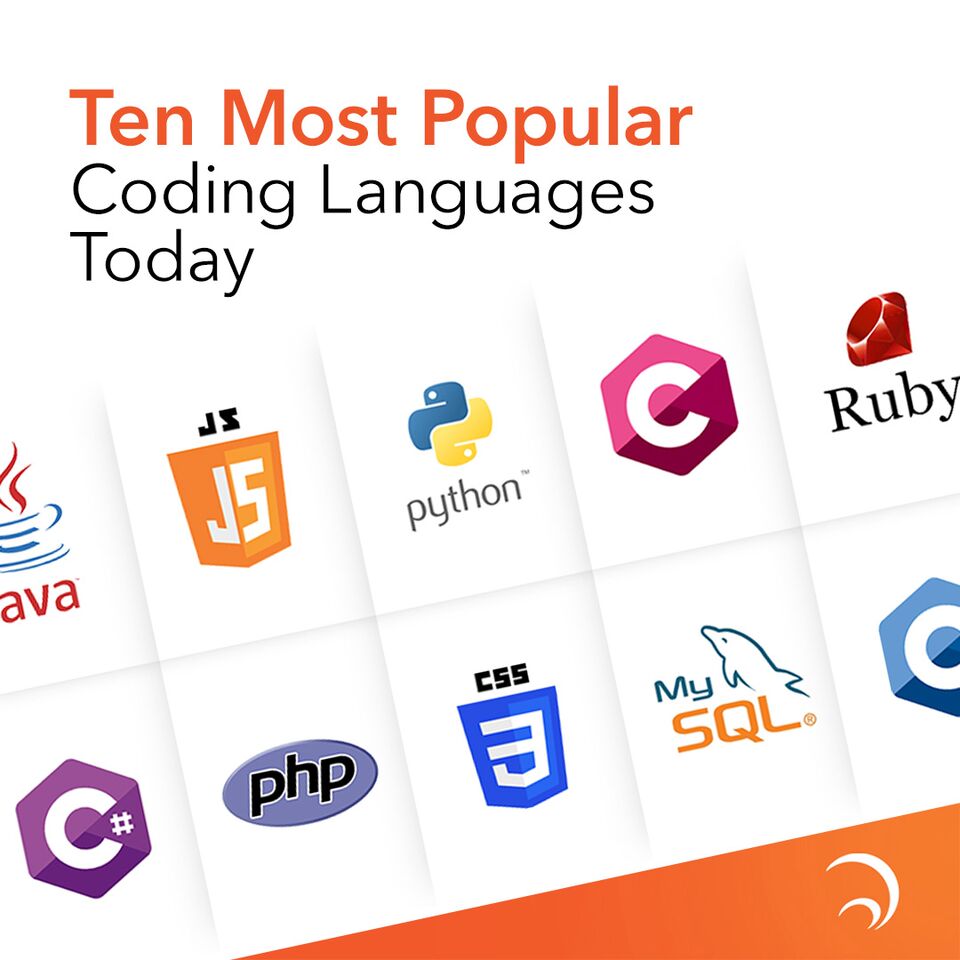Everyone should know a little bit of coding. Even if you don’t want to become a developer (with its high salaries and excellent job prospects), some programming is useful to:
- Make appropriate hires in your business and for your IT needs.
- Be more effective at setting up your home and work IT environments.
- Ensure programs bend to your will. Software is running your life: unlocking your car, downloading your videos, finding your romantic partners – there is software behind all these acitivities.
- Teach yourself structured and creative thinking via programming.
So what are the ten popular programming languages today?
1. Java
This is an extremely popular programming language. Not only is it essential for developing Android apps, but also for building server-side applications, video games and mobile apps. Java is part of the HyperionDev Software Engineering course.
2. JavaScript
This forms much of the basis for the modern web. JS allows you to do complex things on web pages – e.g. interactive maps, animated 2D/3D graphs, content updates, etc. It’s the third layer of standard web technologies, the others beings HTML and CSS. The HyperionDev Mobile Developer Bootcamp includes learning HTML, CSS and Javascript.
3. Python
Certainly Python falls under the list of ten popular programming languages. This language is great, because it’s often claimed that it’s the easiest language to learn and it’s a one-stop shop: there’s a Python framework for most things, including web apps and data analysis. Noteworthy applications built with Python include Pinterest and Instagram. If you’re interested in this language, the HyperionDev Software Engineer Bootcamp will appeal to you.
4. C
This is often the first programming language taught in College, and is one of the oldest programming languages (created in the early 1970s). It’s a good ‘in-between’ language that incorporates object-oriented features without being too extreme about it. C is often used for embedded systems – for example, the firmware of your TV or the operating system of an airplane.
5. Ruby (also known as Ruby on Rails)
Ruby is easy to learn, in high demand, and a major supplier of web apps. It’s a server-side web application framework.
6. C# (pronounced C sharp)
This language is used to develop Microsoft apps, and was developed within its .Net initiative. It’s syntactically very similar to Java.
7. PHP
PHP is often used with data-heavy websites and app development. It’s behind WordPress and Facebook. The really good news: it’s an open-source language, so there are lots of free pre-built modules that you can use and modify for your projects.
8. CSS (Cascading Style Sheets)
You’ll use this language to design beautiful websites and browser-based apps. CSS forms an integral part of the HyperionDev Full Stack Web Developer Bootcamp.
9. SQL (Structured Query Language)
This database query language is used for dealing with big data. SQL helps you select the required data from huge databases. Interestingly, it’s the fastest growing open-source relational database management system. So far, there have been 100 million downloads.
10. C++
This is also an offshoot of the C programming language, which was created back in 1983. Its range is wide, from desktop web apps to server infrastructure. It is frequently used for tasks that require high performance, such as video editing and transcoding, high-end computer-aided design, image processing, games, telecommunications and business. Flight control systems could be written in C++, so too could high-volume trading financial exchanges.
Whatever language you decide you learn, you will be pick up valuable programming skills. If you decide to learn one of the ten popular programming languages, it will be easier to pick up additional computer languages. Find out more about HyperionDev’s Bootcamps and individual programming language courses.
In addition, download HyperionDev’s Programming Guide 2017 to get more in-depth analysis of the different languages, and language trends for 2017.


